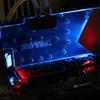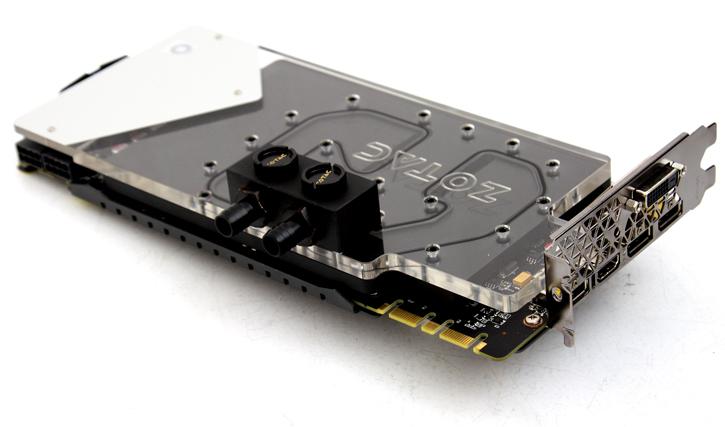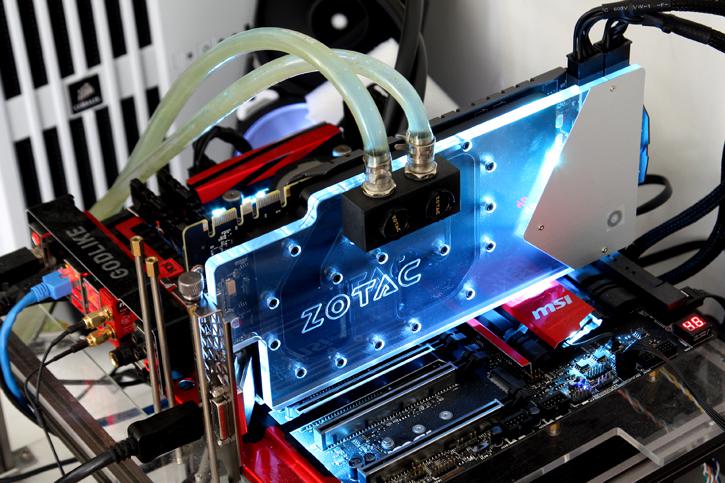Conclusion
Conclusion
Allow me to start this conclusion page by stating the obvious, no from a financial point of view, a liquid cooled GTX 1080 does not make much sense. Your tweaking experience is on par with proper air-cooled versions, mostly compared to reference (founders edition cards or custom cards that hover in the 80 Degrees C range under load) at best this card offers some more performance as it will not throttle or run into an thermal limiter. With the obvious out of the way, we need to talk about sentiment. The ArtcticStorm series is not about purchasing a card that gets you the most value for money, nope. These cards are intended to be an exemplary finish towards a nice PC build with liquid cooling. I know 80% of the poeple out there are value for money, but it is the other 20% that treasure a fine quality build with massive aesthetic highlight, and that is exactly what this product offers. So yes, the reality remains that the differences in performance in-between all tweaked 1080 models is neglectable. I mean to date we have tested like eight tweaked SKUs from varying manufacturers and the differences in-between ALL cards are like 4 FPS give or take 1 FPS. The problem with the highest-end SKUs is that they are more expensive, and that extra money just does not justify the little performance gain. That difference you will hardly see back in performance as any 1080 can be tweaked manually to these levels. So once again the tail ends at extra features. With the ArcticStorm edition you are looking at a (slightly) factory higher clock frequency and the LED functionality harbored in that full-cover block and. Really, that's all the difference. Depending on the clock frequency modus you choose to use you may expect that dynamic boost clock hovering at the 1.90~1.95 GHz marker with the default clocks and yes that is a merely a slight notch faster compared to the founder editions.
Aesthetics
The water-block on the ArcticStorm certainly works for me, it is appealing to the eyes with its transparency, the looks are good and the LED system allows you to color configure it to your taste (with an animation series available). We would like to point out that the latest FireStorm software did not support LED configuration? We dropped back to an older 2.0x build (that dreadful Afterburner cloned version) and with that software color configuration kicked in. Cool dibs is that back-plate, with opening at the proper areas (GPU/VRM) for venting it however does not feel in line with the front-side with the grey and screaming yellow + Zotac logo. Subtlety should prevail here, and it simply doesn't. I remain skeptical about back-plates, they potentially can trap heat and thus warm up the PCB. But the flip-side is that they do look better and can protect your PCB and components from damage. Consumer demand is always decisive, and you guys clearly like graphics cards with back-plates.
Cooling & Noise Levels
The card and cooling-block obviously do not make any sound hence it is hard to rate this. Your noise levels are created by your liquid cooling loop, and that can be as loud or silent as you configure it. Water-cooling overall can be very silent though if you pick the right stuff. Unfortunately there was audible coil noise coming from the PCB every now and then. I doubt you can hear it in a closed PC though, but on our test-bench we could hear definitely hear some once you reach higher frame-rates.
Power Consumption
Any GP104 Pascal GPU and thus GP104 based graphics card is rated as having a 190 Watt TDP under full stress, our measurements back that up albeit are roughly 10% higher due to the faster clocks and thus voltage usage. Anyhow, at this performance level you are looking at a card that consumes roughly 400~450 Watts for a stressed PC in total, that is okay. We think a 500~600 Watt PSU would be sufficient and if you go with 2-way SLI say an 750 Watt power supply is recommended. It's definitely more than needed but remember - when purchasing a PSU, aim to double up in Wattage as your PSU is most efficient when it is under 50% load. Here again keep in mind we measure peak power consumption, the average power consumption is a good notch lower depending on GPU utilization. Also, if you plan to overclock the CPU/memory and/or GPU with added voltage, please do purchase a power supply with enough reserve. People often underestimate it, but if you tweak all three aforementioned variables, you can easily add 200 Watts to your peak power consumption budget as increasing voltages and clocks increases your power consumption.
Overall gaming performance
Do you really need a card as beefy as the GeForce GTX 1080 really is though? Well, that depends on a rather abstract external factor, your monitor(s) and in specific the resolution you play your games at. If you game at a resolution of 1920x1080 (Full HD) then no, not really. However, more is better and with technologies like DSR (super-sampling) and Ultra HD the raw horsepower this card offers certainly isn't distasteful. Also, with with surround gaming (three monitors) the GeForce GTX 1080 will just make a lot of sense, especially with the new simultaneous multi-projection feature build into the rendering pipeline, that probably is one of the most innovative features Nvidia has added that I have seen in a long time. From 1080p to Ultra HD the GeForce GTX 1080 hauls the proverbial toosh compared to whatever other single GPU based graphics card you can name in existence. Obviously it is the fastest kid on the block. This much performance and graphics memory helps you in Ultra HD, hefty complex anti-aliasing modes, DSR and of course the latest gaming titles. I consider this to be among the first viable single GPU solutions that allows you to game properly in Ultra HD with some very nice eye candy enabled. However, I was kinda hoping to be closer to 60 FPS on average with the GTX 1080 in Ultra HD. But that will probably take the future Big Pascal (Ti / Titan). As always, drivers wise we can't complain at all, we did not stumble into any issues. And with a single GPU there's no micro-stuttering and no multi-GPU driver issues to fight off. Performance wise, really there's not one game that won't run seriously good at the very best image quality settings. Gaming you must do with a nice 30" monitor of course, at 2560x1440/1600 or Ultra HD. Now, we can discuss the advantages of an 8 GB framebuffer, but hey, you can draw your own conclusions there. At least you won't run out of graphics memory for the years to come right? So in that respect the card is rather future proof. SLI then, we have to mention this. Starting with Pascal the primary focus for Nvidia in terms of multi-GPU setups is that they will support 2-way SLI, but really that's it and all. One last remark on performance. You will have noticed that in some games this higher clocked product is a good 10% faster where in other just a few percent. That's Nvidia's limiters at work for you. All card under very hefty load will be limited in a way more narrow bracket. Whereas games that leave enough breathing room can advance on that GPU and score better opposed to some other games.
Overclocking
Due to the many limiters and hardware protections Nvidia has built in all and any cards will hover roughly at or just over the 2 GHz on the Boost marker. Now, the one factor that can actually positively influence the boost speed a little is temperature as the GPU will then will throttle less. And that did show as we could boost to 2050~2140 MHz, but that is borderline stable. On 3DMark Firestrike with this card tweaked for example it may hover at ~2075 MHz, while in Rise of the Tom Raider (2016) you will be close towards 2.1 GHz. The reality is that Nvidia monitors and adapts to hardware specific loads, e.g. an application that is nearly viral like on the GPU will have the effect of the GPU protecting itself by lowering clocks and voltages. The opposite applies here as well, if a game does not try & fry that GPU, it'll clock a bit faster withing the tweaked thresholds at your disposal. Tweaking is fun, but definitely more complicated anno 2016. The memory can reach 11 Gbps effectively fairly easy. So if you can find a high enough stable tweak, definitely go or it if you are seeking that last bit of extra performance. Fact remains that the card is tweaked out of the box, and we'd advise to stick to these values. There is one thing I like to point note, due to the nature of liquid cooling your GPU temperature will sit at 50 Degrees C under load, yeah? Even overclocked that temperature stays in that zone. In the end that means the card will not be throttling based on the thermal limiter even overclocked, and that can bring in a few extra FPS overall all by itself.
Concluding
The ZOTAC GeForce GTX 1080 ArcticStorm really is an impressive product. You can argue the low default clock frequency though. However since ZOTAC cannot predict to what kind of cooling loop you will connect the kit, I bet here is that they claim a "better be safe then sorry" policy here. Obviously you can easily tweak the product as shown in our article. Regardless of liquid cooling compared to (proper custom AIB) air-cooling, the 1080 cards all will tweak to roughly the same levels, that is the stone cold message I have been relaying in all my reviews. However we do predict less throttling with liquid cooling, but here again if tweaked with an air-cooled product that can keep the temperature well under 80 Degrees C, that would offer the same performance. We do have to note that the water-block is full coverage, that did have a vey positive effect on our GDDR5X memory, we could overclock it to its maximum at an effect 1.2 GHz, pretty impressive stuff really. Now I have stated it before, value for money wise is not something we should even discuss here. A card like the ArcticStorm is all about building that exquisite looking DIY PC with water-cooling. Combined with the LED lit options this will bring a gorgeous finish to your PC. Me personally, I love this design and look. But completely fail to understand the looks and design of that back-plate. Based up-on overall design, cooling, looks, RGB LED system and sure, that x-factor it creates does make the product very special and as such definitely comes recommended. The product can be spotted for roughly € 867,50 / 879 USD in e-tail as we speak.
Recommended Downloads
- Sign up to receive a notice when we publish a new article
- Or go back to Guru3D's front page




